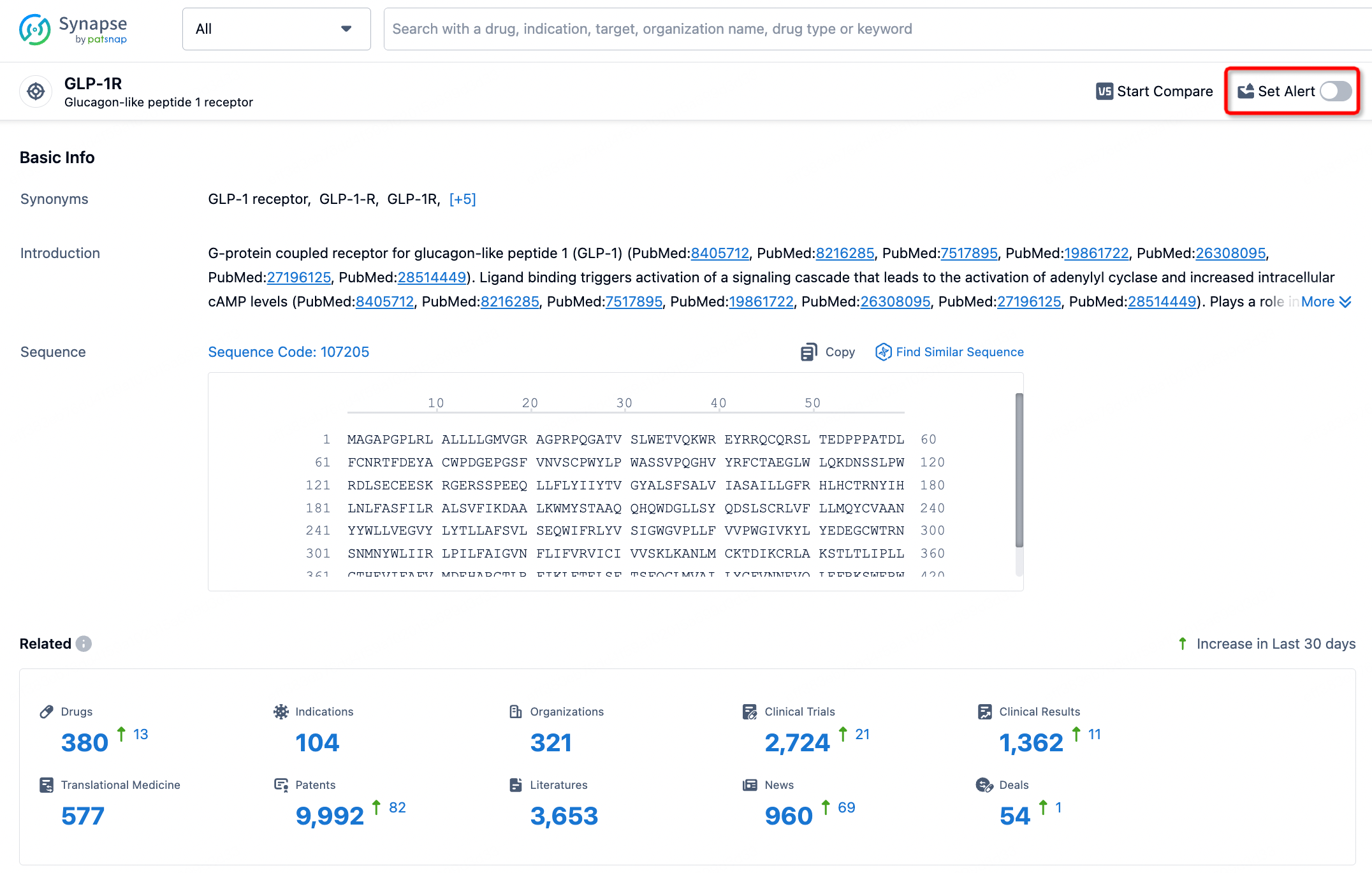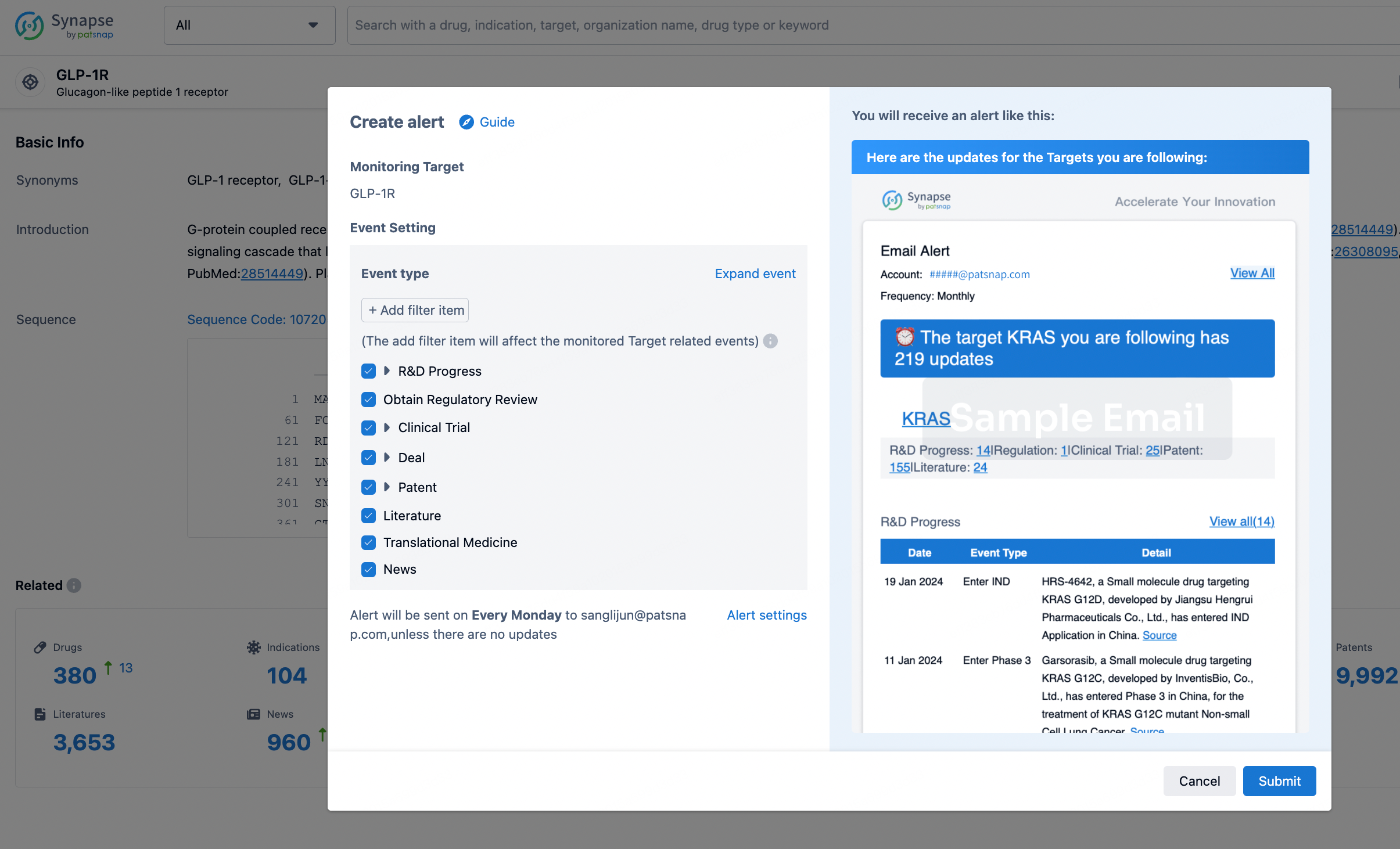Request Demo
What are SFRP1 inhibitors and how do they work?
25 June 2024
Introduction to SFRP1 inhibitors
SFRP1 inhibitors represent a promising frontier in the field of targeted therapeutics. Secreted Frizzled-Related Protein 1 (SFRP1) is a pivotal modulator in the Wnt signaling pathway, a complex network of proteins known for their roles in regulating cell proliferation, differentiation, and migration. Aberrations in Wnt signaling have been implicated in a variety of diseases, most notably cancer. By inhibiting SFRP1, researchers aim to restore normal Wnt signaling, offering potential treatments for conditions where this pathway is dysregulated. This burgeoning area of research holds significant promise for developing innovative therapies that could profoundly impact patient outcomes.
How do SFRP1 inhibitors work?
To understand how SFRP1 inhibitors function, it's essential to grasp the basics of the Wnt signaling pathway. Wnt proteins interact with cell surface receptors to initiate a cascade of intracellular events that control gene expression. SFRP1 acts as an extracellular antagonist to Wnt proteins, binding to them and preventing them from interacting with their receptors. This inhibition can disrupt normal cellular functions and contribute to disease progression.
SFRP1 inhibitors work by blocking the activity of SFRP1, thereby allowing Wnt proteins to engage with their receptors unimpeded. This reactivation of Wnt signaling can restore normal cellular processes. The inhibitors achieve this through various mechanisms, such as small-molecule inhibitors that bind directly to SFRP1, neutralizing its activity. By targeting SFRP1, these inhibitors can modify the cellular environment, promoting normal cell behavior and potentially halting disease progression.
What are SFRP1 inhibitors used for?
The therapeutic potential of SFRP1 inhibitors spans several medical fields, given the broad role of Wnt signaling in different physiological and pathological processes. One of the most exciting applications is in oncology. Many cancers exhibit dysregulated Wnt signaling, and abnormal SFRP1 activity is often a contributing factor. By inhibiting SFRP1, researchers hope to correct these signaling errors, thereby halting tumor growth and potentially inducing regression in certain cancers, such as colorectal, breast, and lung cancer.
In addition to cancer, SFRP1 inhibitors are being explored for their potential in regenerative medicine. The Wnt signaling pathway is crucial for tissue regeneration and repair. In conditions such as osteoarthritis and fibrotic diseases, where tissue repair mechanisms are compromised, SFRP1 inhibitors could enhance the body's natural regenerative processes. By promoting effective signaling, these inhibitors might help in regenerating damaged tissues and improving patient outcomes in degenerative conditions.
Moreover, there is growing interest in the role of SFRP1 inhibitors in treating metabolic and cardiovascular diseases. Aberrant Wnt signaling has been linked to conditions like obesity, diabetes, and atherosclerosis. SFRP1 inhibitors could offer a novel approach to managing these diseases by restoring normal cellular functions and improving metabolic health. For instance, in diabetes, where insulin signaling and glucose metabolism are disrupted, reactivating Wnt signaling through SFRP1 inhibition could enhance insulin sensitivity and glucose uptake.
In conclusion, SFRP1 inhibitors hold immense potential across a spectrum of diseases. By precisely targeting the Wnt signaling pathway, these inhibitors offer a strategic approach to correcting cellular dysfunctions that underlie many serious health conditions. As research progresses, the hope is that SFRP1 inhibitors will move from experimental treatments to standard therapies, providing new hope for patients with conditions currently lacking effective treatments. The future of SFRP1 inhibitors is indeed bright, promising to unlock new avenues in medicine and transform the landscape of disease management.
SFRP1 inhibitors represent a promising frontier in the field of targeted therapeutics. Secreted Frizzled-Related Protein 1 (SFRP1) is a pivotal modulator in the Wnt signaling pathway, a complex network of proteins known for their roles in regulating cell proliferation, differentiation, and migration. Aberrations in Wnt signaling have been implicated in a variety of diseases, most notably cancer. By inhibiting SFRP1, researchers aim to restore normal Wnt signaling, offering potential treatments for conditions where this pathway is dysregulated. This burgeoning area of research holds significant promise for developing innovative therapies that could profoundly impact patient outcomes.
How do SFRP1 inhibitors work?
To understand how SFRP1 inhibitors function, it's essential to grasp the basics of the Wnt signaling pathway. Wnt proteins interact with cell surface receptors to initiate a cascade of intracellular events that control gene expression. SFRP1 acts as an extracellular antagonist to Wnt proteins, binding to them and preventing them from interacting with their receptors. This inhibition can disrupt normal cellular functions and contribute to disease progression.
SFRP1 inhibitors work by blocking the activity of SFRP1, thereby allowing Wnt proteins to engage with their receptors unimpeded. This reactivation of Wnt signaling can restore normal cellular processes. The inhibitors achieve this through various mechanisms, such as small-molecule inhibitors that bind directly to SFRP1, neutralizing its activity. By targeting SFRP1, these inhibitors can modify the cellular environment, promoting normal cell behavior and potentially halting disease progression.
What are SFRP1 inhibitors used for?
The therapeutic potential of SFRP1 inhibitors spans several medical fields, given the broad role of Wnt signaling in different physiological and pathological processes. One of the most exciting applications is in oncology. Many cancers exhibit dysregulated Wnt signaling, and abnormal SFRP1 activity is often a contributing factor. By inhibiting SFRP1, researchers hope to correct these signaling errors, thereby halting tumor growth and potentially inducing regression in certain cancers, such as colorectal, breast, and lung cancer.
In addition to cancer, SFRP1 inhibitors are being explored for their potential in regenerative medicine. The Wnt signaling pathway is crucial for tissue regeneration and repair. In conditions such as osteoarthritis and fibrotic diseases, where tissue repair mechanisms are compromised, SFRP1 inhibitors could enhance the body's natural regenerative processes. By promoting effective signaling, these inhibitors might help in regenerating damaged tissues and improving patient outcomes in degenerative conditions.
Moreover, there is growing interest in the role of SFRP1 inhibitors in treating metabolic and cardiovascular diseases. Aberrant Wnt signaling has been linked to conditions like obesity, diabetes, and atherosclerosis. SFRP1 inhibitors could offer a novel approach to managing these diseases by restoring normal cellular functions and improving metabolic health. For instance, in diabetes, where insulin signaling and glucose metabolism are disrupted, reactivating Wnt signaling through SFRP1 inhibition could enhance insulin sensitivity and glucose uptake.
In conclusion, SFRP1 inhibitors hold immense potential across a spectrum of diseases. By precisely targeting the Wnt signaling pathway, these inhibitors offer a strategic approach to correcting cellular dysfunctions that underlie many serious health conditions. As research progresses, the hope is that SFRP1 inhibitors will move from experimental treatments to standard therapies, providing new hope for patients with conditions currently lacking effective treatments. The future of SFRP1 inhibitors is indeed bright, promising to unlock new avenues in medicine and transform the landscape of disease management.
How to obtain the latest development progress of all targets?
In the Synapse database, you can stay updated on the latest research and development advances of all targets. This service is accessible anytime and anywhere, with updates available daily or weekly. Use the "Set Alert" function to stay informed. Click on the image below to embark on a brand new journey of drug discovery!
AI Agents Built for Biopharma Breakthroughs
Accelerate discovery. Empower decisions. Transform outcomes.
Get started for free today!
Accelerate Strategic R&D decision making with Synapse, PatSnap’s AI-powered Connected Innovation Intelligence Platform Built for Life Sciences Professionals.
Start your data trial now!
Synapse data is also accessible to external entities via APIs or data packages. Empower better decisions with the latest in pharmaceutical intelligence.


